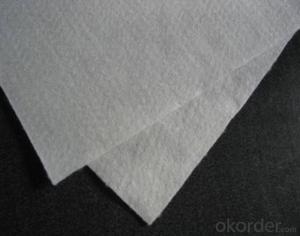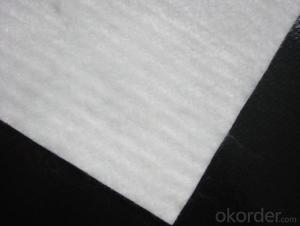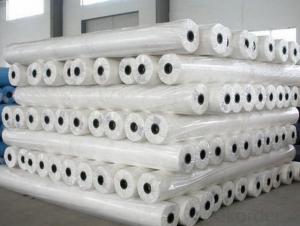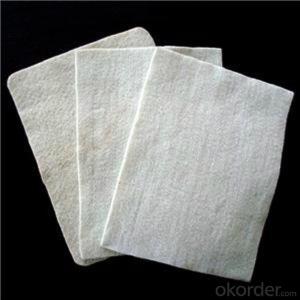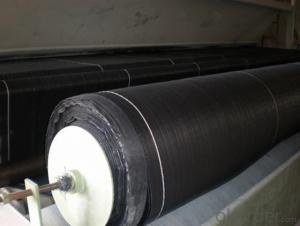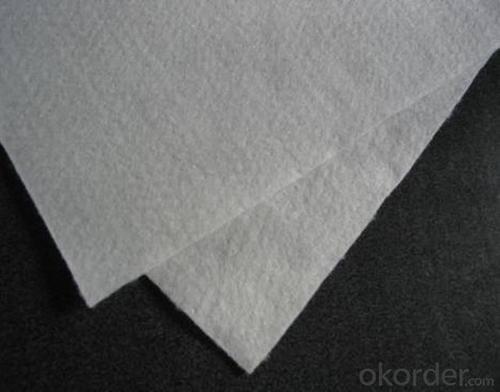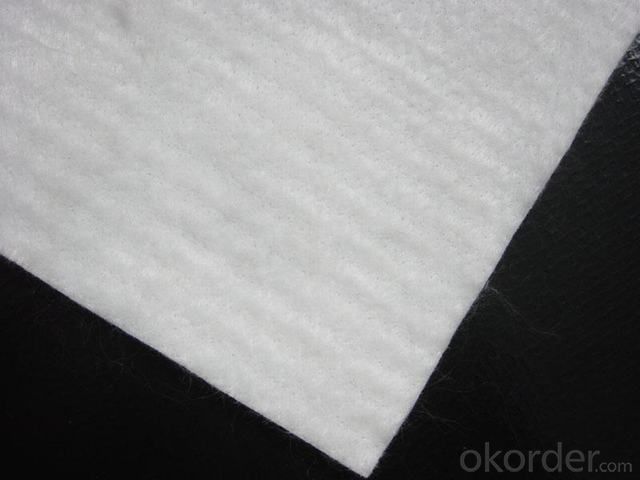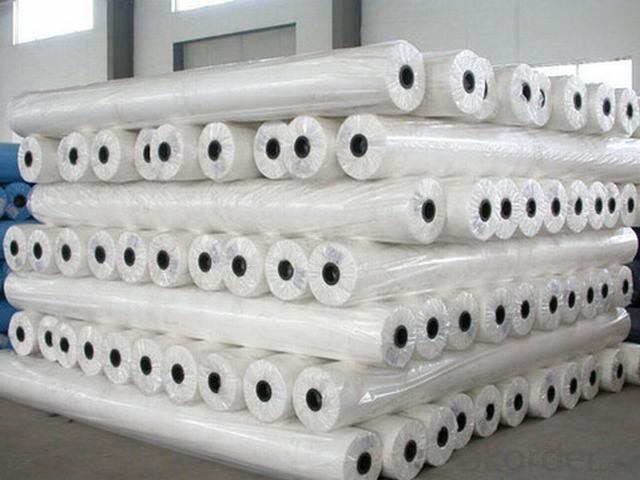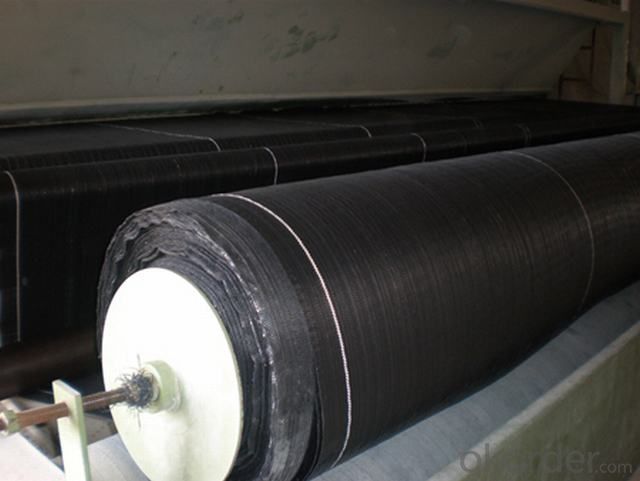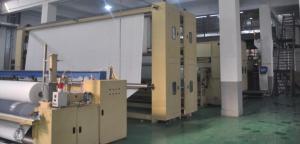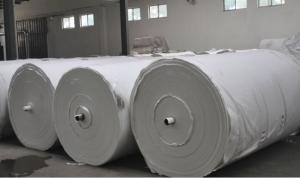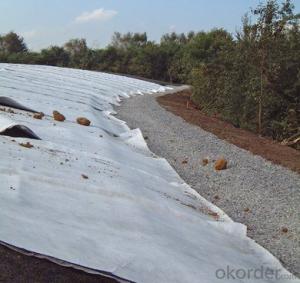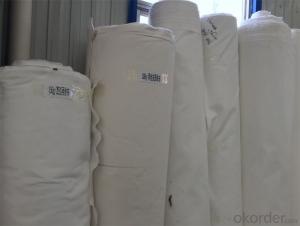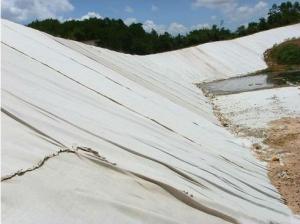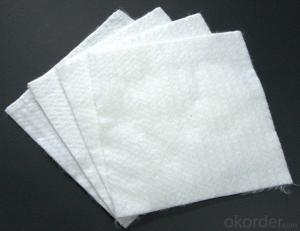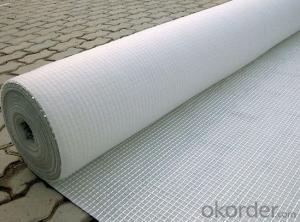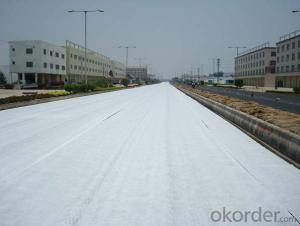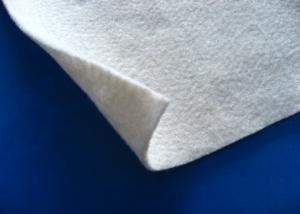Pyramat Specifications of Needle Punched Nonwoven Geotextile
- Loading Port:
- Qingdao
- Payment Terms:
- TT or LC
- Min Order Qty:
- 20000 m²
- Supply Capability:
- 1500000 m²/month
OKorder Service Pledge
OKorder Financial Service
You Might Also Like
Specifications of Needle Punched Nonwoven Geotextile:
Polyester Filament Needle Punched Geotextile/nonwoven
Fine permeability and filtering performance
Acid and alkali resistance
Features of Needle Punched Nonwoven Geotextile:
High strength, good capacity of elongation and high biology tolerance, alkali tolerance, acidity tolerance, weather resistance, good filtration and fine drainage capacity etc. With good cost performance, easy in construction and use effects.
Application of Needle Punched Nonwoven Geotextile:
1. Water conservancy projec: seawall, dike,river canal engineering;Reservoir reinforcement engineering; Reclamation engineering; Flood control engineering.
2.Highway,railway and airport project: soft foundation reinforcement; Slope protection; Pavement structure layer reflective crack prevention; Drainage system; Greening belt.
3.Electrical engineering : Nuclear infrastructure;Thermal power ash dam project;Hydropower project.
Technical Data Sheet of Needle Punched Nonwoven Geotextile:
Index Spec.
Article | 100 | 150 | 200 | 250 | 300 | 350 | 400 | 450 | 500 | 600 | 800 | |
1 | Quality error in unit area,% | -6 | -6 | -6 | -5 | -5 | -5 | -5 | -5 | -4 | -4 | -4 |
2 | Thickness,mm≥ | 0.8 | 1.2 | 1.6 | 1.9 | 2.2 | 2.5 | 2.8 | 3.1 | 3.4 | 4.2 | 5.5 |
3 | Width error,% | -0.5 | ||||||||||
4 | Breaking strength,KN/m≥ | 4.5 | 7.5 | 10.0 | 12.5 | 15.0 | 17.5 | 20.5 | 22.5 | 25.0 | 30.0 | 40 |
5 | Elongation at break,% | 40~80 | ||||||||||
6 | CBR puncture strength,KN≥ | 0.8 | 1.4 | 1.8 | 2.2 | 2.6 | 3.0 | 3.5 | 4.0 | 4.7 | 5.5 | 7.0 |
7 | Effective aperture 090(095),mm | 0.07~0.2 | ||||||||||
8 | Vertical permeability coefficient , cm/s | K X (10-4-10-3) K=1.0~9.9(K=1.0~9.9) | ||||||||||
9 | Tearing strength,KN≥ | 0.14 | 0.21 | 0.28 | 0.35 | 0.42 | 0.49 | 0.56 | 0.63 | 0.70 | 0.82 | 1.1 |
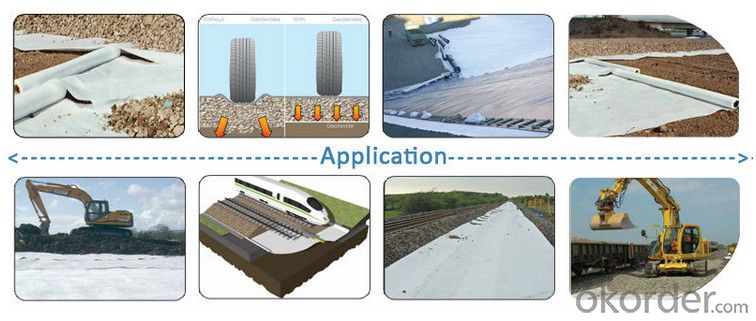
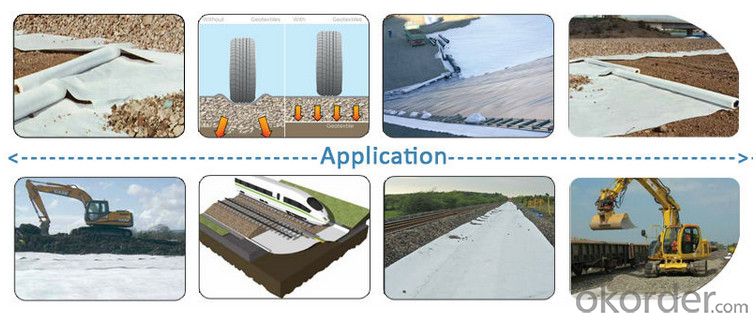

- Q: Can geotextiles be used in geosynthetic reinforced walls?
- Yes, geotextiles can be used in geosynthetic reinforced walls. Geotextiles are commonly used as a separation layer between different soil types in reinforced walls to prevent soil mixing and promote proper drainage. Additionally, they can provide additional tensile strength and stability to the wall structure.
- Q: What are the different factors to consider for geotextile selection in agricultural applications?
- Some of the different factors to consider for geotextile selection in agricultural applications include the required strength and durability of the geotextile, the type and weight of the soil, the presence of chemicals or contaminants, the desired permeability and drainage capacity, as well as the specific application and intended use of the geotextile. Additionally, factors such as installation requirements, cost-effectiveness, and environmental considerations should also be taken into account.
- Q: Under what circumstances drainage pipes need additional geotextiles
- Infiltration of water under the circumstances, geotextile play a filtering effect, Huazhi geotextile material manufacturers
- Q: What are the advantages of using geotextiles in landfill lining systems?
- There are several advantages of using geotextiles in landfill lining systems. Firstly, geotextiles act as a barrier that prevents the migration of contaminants from the landfill into the surrounding environment. This helps to protect groundwater and nearby ecosystems from contamination. Secondly, geotextiles enhance the stability and integrity of the landfill lining system. They provide reinforcement and help to distribute the load evenly, which reduces the risk of structural failure. Additionally, geotextiles have excellent filtration properties. They allow for the efficient drainage of leachate, which is the liquid that is generated as waste decomposes. This helps to prevent the buildup of pressure within the landfill and reduces the risk of leachate seeping into surrounding areas. Furthermore, geotextiles are durable and resistant to degradation, ensuring the longevity of the landfill lining system. They are also lightweight and easy to install, which can save time and costs during construction. Overall, the use of geotextiles in landfill lining systems provides numerous benefits in terms of environmental protection, structural integrity, drainage efficiency, and cost-effectiveness.
- Q: Can geotextiles be used in wetland restoration projects?
- Yes, geotextiles can be used in wetland restoration projects. They are often utilized to stabilize the soil and control erosion, which is crucial in wetland areas. Geotextiles can also help retain sediments and filter water, aiding in the establishment and maintenance of the wetland ecosystem.
- Q: How do geotextiles affect soil moisture retention?
- Geotextiles can positively impact soil moisture retention by acting as a barrier that prevents excessive evaporation of water from the soil surface. They create a physical barrier that reduces water loss through evaporation, thus helping to retain moisture within the soil. Additionally, geotextiles can also facilitate water infiltration and distribution, promoting better water retention and preventing runoff. Overall, geotextiles play a crucial role in enhancing soil moisture retention and improving water management in various applications, such as agriculture, landscaping, and erosion control.
- Q: How do geotextiles aid in the protection of geomembranes?
- Geotextiles aid in the protection of geomembranes by acting as a protective barrier between the geomembrane and the surrounding soil or other materials. They prevent direct contact and potential damage from sharp objects, rocks, or roots, while allowing for the drainage of water and gases. This helps to extend the lifespan of the geomembrane and maintain its integrity, ensuring effective containment and protection in various applications such as landfills, ponds, or construction projects.
- Q: How do geotextiles help with reinforcement of geosynthetic clay liner slopes?
- Geotextiles help with the reinforcement of geosynthetic clay liner slopes by providing additional strength and stability to the slope. They act as a barrier, preventing the clay liner from eroding or sliding down the slope, while also distributing the loads and reducing the risk of soil movement. The geotextiles also enhance the overall performance and longevity of the liner by reducing the impact of external factors such as water flow or vegetation growth.
- Q: Can geotextiles be used in the construction of artificial islands?
- Yes, geotextiles can be used in the construction of artificial islands. Geotextiles are often used as a reinforcement material to enhance the stability of soil and prevent erosion. In the context of artificial island construction, geotextiles can be used to strengthen the foundation, provide stability to the soil, and protect against wave action.
- Q: How are geotextiles affected by mechanical stress?
- Geotextiles are affected by mechanical stress in various ways. When subjected to high levels of stress, such as heavy loads or strong forces, geotextiles can experience deformation, tearing, or even complete failure. The mechanical stress can cause the geotextile's fibers to break or pull apart, reducing its overall strength and integrity. Additionally, the stress can deteriorate the geotextile's ability to retain its filtration, separation, or reinforcement properties, leading to compromised performance. Therefore, it is crucial to consider the expected mechanical stress levels and choose geotextiles with suitable strength and durability to ensure their effectiveness in different applications.
Send your message to us
Pyramat Specifications of Needle Punched Nonwoven Geotextile
- Loading Port:
- Qingdao
- Payment Terms:
- TT or LC
- Min Order Qty:
- 20000 m²
- Supply Capability:
- 1500000 m²/month
OKorder Service Pledge
OKorder Financial Service
Similar products
Hot products
Hot Searches
Related keywords
